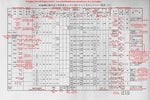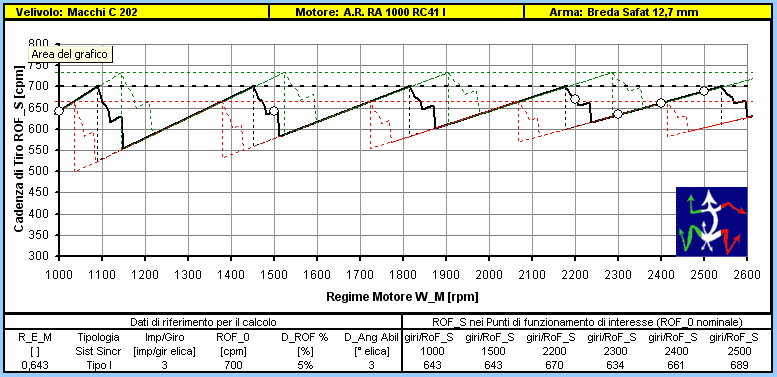One reason they were used as synchronized guns was because nobody wanted to put a Vickers gun in the wings
Since when were we discussing Vickers guns?
The Ho-103 and Ho-5 are both Browning designs and I thought this discussion was about how poorly the Ho-103 synchronized and how pilots had it replaced with the Type 89 which was the Vickers.
Number of blades shouldn't have a lot to do with anything. Sakae engine did 2600rpm and used a 0.69 reduction gear? (corrections welcome) so prop was turning 1794rpm (?), with a 900rpm machine gun that is one shot every two full revolutions of the prop, regardless of number of blades. A slightly slower gun may run into more trouble. Machine guns also don't fire real evenly unless a lot of care is used setting them up and the ammo is very, very good. Gun is advancing the belt and depending on weight of belt and arrangement (lots of short layers or a few long layers) that can slow the guns down. US rather famously didn't test prewar installations with full belts and ran into all sorts of problems. You may average 14 shots per second but that doesn't mean the the time between shots doesn't vary.
Synchronizers often fired the gun when the blade was clear vs stopping the gun when the blade was in the way. It may not sound like it but that is a distinct difference. Look at the example again, a 3 blade prop on a Sakae is going to swing 8 or 9 blades past a 7.7mm gun for every time the gun fires in theory.
I believe I have a pretty good idea of how a synchronizer works as per this post which I will reproduce below for ease of reading.
FW-190 - How Good Was It, Really?
Gentlemen,
I believe there is a serious misconception about how guns are fired through a propeller arc.
First of all, there is a difference between an "interrupter" and a "synchronizer" mechanism.
The interrupter may have been used in the early days of he Great War, but in general not much later.
It works by "interrupting" the firing cycle of the gun which would be firing free between the propeller blades.
The synchronizer is much different. It triggers the gun to fire. If the gun is ready to fire and if the trigger is pulled, the gun fires.
A typical synchronizer would trigger the gun once in each gap between blades.
For some typical (and simple) numbers, figure that an engine might be turning 2500 RPM with a reduction ratio of 0.500:1 to the propeller.
For a 3 blade propeller that would be 1250 x 3 = 3750 times per minute that the synchronizer would attempt to fire the gun.
We know of course that a typical MG / Cannon cyclic rate is much lower than that, so many times when the synchronizer connects, the gun is not ready to fire.
The reduction in firing rate happens because sometimes the gun IS ready to fire but the synchronizer has not reached the proper position yet.
There are plenty of aeroplanes with synchronized guns and 4 blade propellers, especially in Japanese service. Think N1K1-J and Ki 84.
Two 12.7 guns may have been good armament in the late 30s or even 1940 but it was falling behind in in 1941/42. Japanese pilots in Ki 43s did bring down a number of B-24s but the most favored tactic was to attack from the front (pre nose turret) and use 3-4 fighters, one behind the other to attack a single bomber in the formation. In other words they were using 3-4 planes to bring the same firepower to bear as an single American or British fighter could.
I never claimed that Ki 43's 2 x 12.7 mm Ho-103 even with explosive shells was heavy armament.
I just claimed that it was better than the 2 x 7.7 mm Type 97 which is all the A6M2 would have after the 60 rounds of 20 mm were gone.
At a cyclic rate of 520 rounds per minute, the 60 rounds was good for slightly less than 7 seconds of firing time!
- Ivan.


